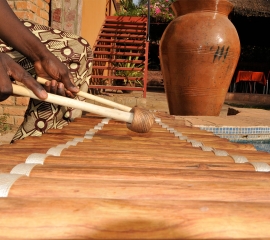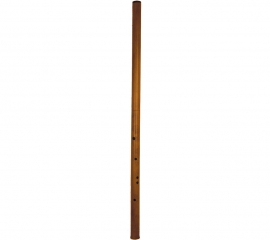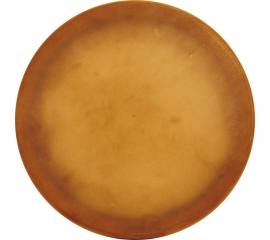Instruments
Instruments

Afghan rubab
Double-chambered lute with 3 main strings (originally made of animal gut, now nylon), 4 frets, 2–3 long drone strings, and up to 15 sympathetic strings (made of copper and steel).
Balaban
Cylindrical oboe made from apricot, mulberry, or nut wood played with a large double reed that produces a soft, breathy, and often mournful sound.

Balafon
It is is a kind of wooden xylophone or percussion idiophone which plays melodic tunes, and usually has between 16 to 27 keys. It has been played in Africa since the 14th century; it originated in Mali, according to the Manding history narrated by the griots.
Bass Ngoni
Customised version of the ngoni to use in place of bass guitar, developed by Bassekou Kouyate

Boog horn
Hollow animal horn, first lip reed instrument
Calabash
Percussion instrument, of the family of idiophones, consisting of a dried half calabash, of large size, that is struck with the palms, fingers, wrist or objects to produce a variety of percussive sounds.

Choor
End-blown flute made from reed or wood with four or five holes. Under various names and in various sizes, such end-blown flutes are widespread among Inner Asian pastoralists, e.g., tsuur (Mongolian), chuur (Tuvan), sybyzghy (Kazakh), and kurai (Bashkir).

Chopo Choor
A clay ocarina with 3-6 holes found in southern Kyrgyzstan and most commonly played by children. There is evidence that horse herders used ocarinas as signalling instruments in thick forests, where they would often graze their horses at night.

Daf
A small frame drum with jingles used to accompany both popular and classical music in Azerbaijan.
Dap
Uyghur frame drum, similar to the Uzbek/Tajik doira; normally covered with donkey hide, set with metal rings. The smaller dap is a virtually indispensable instrument for the Twelve Muqam, marking out the complex rhythmic cycles. A larger version is used in folk contexts to accompany dancing at meshrep festivities and in shamanicstyle healing rituals.
